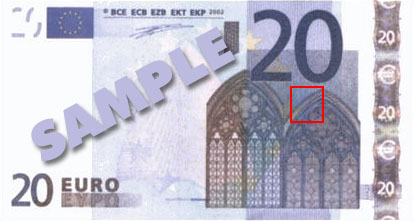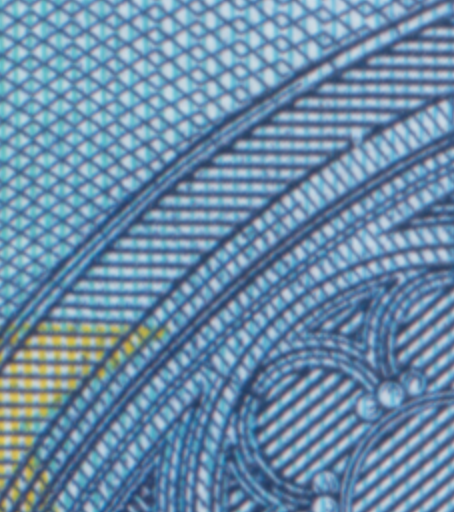Haha. Or not. But: I got myself a new scanner yesterday. I went totally lowcost (a CanoScan LiDE 25) as I only need to scan stuff (mainly for the web) now and again. Besides, my last Mustek scanner (parallel port! ECP/EPP anyone?) was a gift from a friend back in … uhm … 1998 or 1999 or so … and it served me well till a few month ago.
Anyway, so I got this scanner yesterday, threw the CD away instantly, downloaded the tiny WIA driver and everything worked out of the box. (!!)
Today I figured I’d do a little “resolution test” and scan something really hi-res. Like … a banknote. I wasn’t completely naive about it and something about “scanning money” rang a bell — I vaguely remembered having read about countermeasures in consumer products but I had yet to see it. So I put a 20-Euro bill onto the glass, weighed it down with a book. Found the sticker on the box is lying: 600 dpi is not 2.400×1.200 dpi. So far — not surprising. Waited for the ~14MB to be squeezed over USB 1.1 (I said “lowcost”, did I not?). Fired up the graphics software and there it was:

WTF?
Now HOW does the application know the original is a part of a banknote (plus the back of a book)?? I’m sure there is loads of information on this somewhere on the web but at first sight I found this absolutely fascinating — If I’ll find the time I will get back with more details on how this is done.
And just for the sake of completeness: See the part marked with a red square from the banknote below:

The red square from above, scanned with 600 dpi, zoomed (bilinear resampling) to 200%:

That is more than enough for my purposes. And who needs to print money anyway? 😉
It’s the same when you print an image of a bank note. . .it prints a bit of it then stops and prints “www.rulesforuse.org” underneath it. How clever.